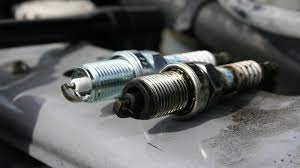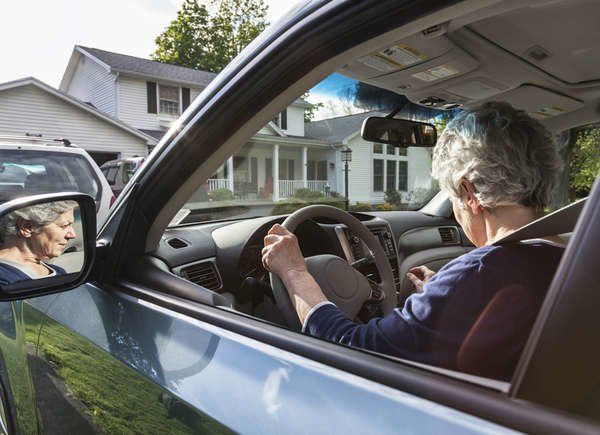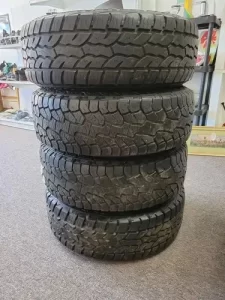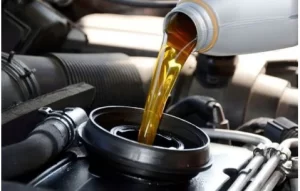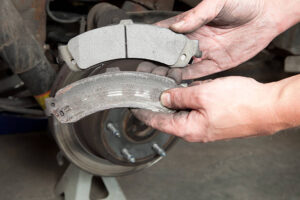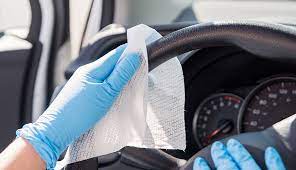
While gasoline engines have come a long way in the last few decades and have been improved greatly, they still struggle to convert energy into mechanical power. Around 70% of the engine’s energy is converted into heat. This could cause your car to overheat if the cooling system wasn’t there.
The cooling system is still one of the most critical components of your car. It should be regularly inspected and monitored to ensure safety, efficiency, health, and the longevity of your vehicle. Failure of the cooling system can lead to expensive repairs that could have been avoided by using preventive maintenance.
What’s in your car’s cooling system?
Modern cars are equipped with a liquid coolant system, which circulates fluid through pipes and other passageways in the engine. This liquid absorbs heat from the engine and cools it when it passes through.
The cooling system of your car is time-tested and contains the following:
- VARIOUS PASSAGEWAYS – THESE HELP TRANSFER COOLANTS WHEREVER THEY NEED TO GO.
- A WATER PUMP – PUMPS THE ANTIFREEZE & WATER MIXTURE THROUGH THE ENGINE’S PASSAGEWAYS & HOSES.
- A THERMOSTAT, YOUR COOLING SYSTEM’S THERMOSTAT, ENSURES TEMPERATURE PROPERTIES TO PREVENT OVERHEATING.
- A RADIATOR, YOUR CAR’S RADIATOR, COOLS YOUR COOLANT, ALLOWING IT THE PERFECT TIME FOR YOUR SYSTEM.
- A RADIATOR CAP – THE RADIATOR CAP PREVENTS PRESSURE FROM GETTING TOO LOW / TOO HIGH AT ANY GIVEN TIME.
- INTERCONNECTING HOOSES – THE HOSES CONNECT TO THE RADIATOR TO COOL COOLANTS AFTER ENERGY HEAT IS TRANSFERRED.
Engine Coolant, A liquid mixture of antifreeze and water found in your vehicle’s radiator, keeps your engine cool in hot weather. It also prevents your engine from freezing in extreme cold. Coolant should be at least 200 degrees Fahrenheit (93 Celsius) to ensure that the engine runs well. Modern vehicles use a mix of ethylene glycol ( Antifreeze) with water. The recommended ratio is 1:1, one part antifreeze to one part water.
Your engine coolant should be checked regularly, just like the rest of your car’s fluids. It is time to inspect your cooling system to see if it is low or dirty. It is important that antifreeze can be very dangerous and should not be shared with animals or people.
A COOLING SYSTEM IS IMPORTANT
Your cooling system’s primary task is to prevent your engine from overheating by transferring heat back into the atmosphere. Your cooling system does more than this.
The following are some of the reasons why your car’s cooling system matters:
- HEATS ENGINE QUICKLY –THE ENGINE OF YOUR CAR RUNS IT IS VERY BEST AT FAIRLY HIGH TEMPERATURES. SO YOUR COOLING SYSTEM CAN QUICKLY EAT THE ENGINE AFTER YOU START YOUR CAR. ENGINES THAT ARE LOW in temperature will cause components to break faster, causing them not to run as efficiently and emitting more polluting gases.
- REGULATES TEMPERATURE – Your cooling system is constantly maintaining your engine at its ideal temperature for your car to continue operating the way you expect it to. This ensures safety and efficiency.
- REMOVES EXCESSHEAT – Your COOLING SYSTEM USES THE PROPERTIES of HEAT TRANSFER TO REMOVE EXCESS HEAT FROM YOUR ENGINE, WHICH CAN CREATE SUNFICTIONS IN DRIVING WHICH CAN INCLUDE COSTLY REPAIRS and CREATING HARMFUL CONDITIONS.
The cooling system is still one of the most important components of your vehicle. Professionals and yourself should regularly inspect it. Your cooling system’s three main functions protect your car’s interior temperature and overall health.
COMMON COOLING SYSTEM ISSUES
A failing cooling system is one of the most obvious signs.
- CAR OVERHEATING
IS,Is your car overheating? If so, your cooling system may be malfunctioning. Whether it’s your pump or the Radiator Cap, it would be best if you had your vehicle inspected ASAP. - STEAM If you see steam coming from your hood, this could be a sign of OVERHEATING. If you see steam coming from under your hood, pull over and let the engine cool down before driving again. It is important to have your system inspected immediately. Having your vehicle towed is a good idea if it keeps on heating.
- LOW COOLANT LEVEL –WHEN THE ENGINE IS NICE, YOU CAN LOOK AT THE COOLANT LEVELS. If they are low, it may be time to replace them.
- COOLANT LESAK –COOLANT LEAKS ARE EASY TO IDENTIFY. They are usually highlighted by their bright yellow or GREEN COLOR. If you notice a spot on your driveway or parking, it is time to do a full inspection.
- DIRTY OR BURNT COOLANT –IF THE APPEARANCE OF YOUR COOLANT DOES NOT LOOK BRIGHT YELLOW, GREEN OR TRANSLUCENT, IT IS A RED FLAG indicating that it is time to replace your COOLANT.
- POOR GAS MILES –A LARGE AND VERY VISIBLE DECREASE in GAS MILEAGE MIGHT BE CAUSED BY A RANDOM TYPE OF AUTOMOTIVE ISSUES. ONE OF THESE IS A COOLING SYSTEM ISSUE.
- SMELL FREEZE –IF ANTIFREEZE BURNS, IT IS TIME TO DO A COMPLETE INSPECTION. THIS CAN MEAN THAT THERE MAY BE A LEAK, OR IT MAY BE TIME FOR A NEW RADIATOR CAP.
These signs could be your car’s signal to tell you that it is time for a professional. If you ignore these warning signs, your cooling system could cause serious problems.
HOW TO MAINTAIN A CAR’S COOLING SYSTEM
It is important to follow a few guidelines for cooling your car. We recommend referring to your car’s manual for maintenance and coolant levels.
It is also important to have your coolant system and radiator checked by a professional every 12 months, especially if you drive a lot. Your engine’s coolant protects it from overheating and freezing. This heat can cause a decrease in performance if it isn’t removed properly.



